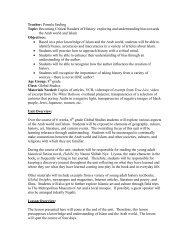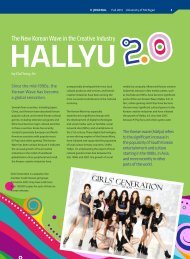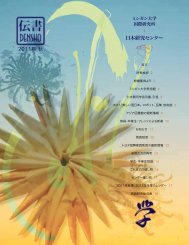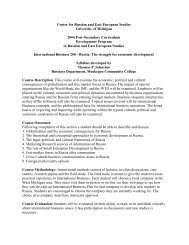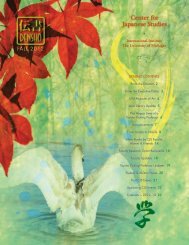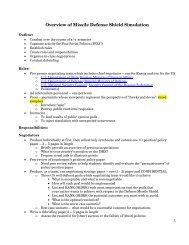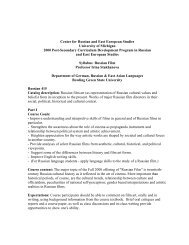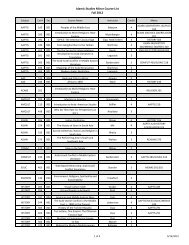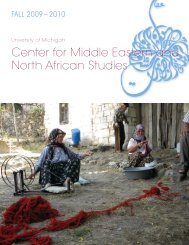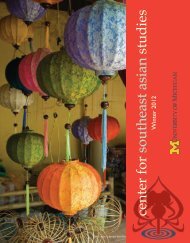2012/2013 Academic Year Calendar - International Institute ...
2012/2013 Academic Year Calendar - International Institute ...
2012/2013 Academic Year Calendar - International Institute ...
You also want an ePaper? Increase the reach of your titles
YUMPU automatically turns print PDFs into web optimized ePapers that Google loves.
SEPTEMBER <strong>2012</strong><br />
Translation for days: Japanese<br />
Moon<br />
Festival*<br />
CHINA<br />
2<br />
9<br />
16<br />
23<br />
Chuseok/Hangawi* –<br />
Harvest Festival<br />
SOUTH KOREA/<br />
NORTH KOREA<br />
30<br />
SUNDAY<br />
MONDAY<br />
Labor Day<br />
UNITED STATES<br />
3<br />
10<br />
17<br />
Rosh Hashanah* –<br />
Jewish New <strong>Year</strong> begins<br />
Keirō no hi – Respect<br />
for the Aged Day<br />
JAPAN<br />
24<br />
TUESDAY<br />
4<br />
11<br />
18<br />
Rosh Hashanah – Jewish<br />
New <strong>Year</strong> ends<br />
25<br />
WEDNESDAY<br />
Ganesh Chaturthi<br />
INDIA<br />
5<br />
12<br />
19<br />
26<br />
Yom Kippur* – Jewish<br />
Day of Atonement<br />
THURSDAY<br />
Liberation Day<br />
TIMOR-LESTE<br />
6<br />
13<br />
20<br />
27<br />
FRIDAY<br />
7<br />
14<br />
21<br />
Independence Day<br />
ARMENIA<br />
28<br />
SATURDAY<br />
1<br />
8<br />
15<br />
22<br />
29<br />
Worlds Between Us<br />
Communicating through calligraphy<br />
Students from Kousen High School in Kusatsu, Japan,<br />
practice the traditional art of shodō , Japanese<br />
calligraphy. Learning to write kanji , Chinese<br />
characters, is a gradual process. In elementary and<br />
junior high school, students learn to write characters<br />
correctly, beginning first with a soft pencil and<br />
then graduating to brush and ink. During this time,<br />
students also learn about the origin of characters and<br />
the correct stroke order. In high school, shodō is, in<br />
most cases, an elective subject in the arts, aimed at<br />
cultivating students’ artistic sensibilities and powers of<br />
self-expression.<br />
DID YOU<br />
KNOW?<br />
• A Blogging Culture. According to an article in the<br />
Washington Post, Japan has the largest and most<br />
active blogging culture in the world. Research<br />
conducted between 2007 and 2009 indicates that<br />
40% of Japanese blogging is done on cell phones,<br />
and 37% of the world's blog posts are in Japanese.<br />
Compared to their Americans counterparts, Japanese<br />
tend to write shorter posts, anonymously, and more<br />
often. Era 8, 20th century since 1945<br />
• Plaza TV. Television viewing gained popularity in<br />
Japan in the 1950s when Nippon Television placed<br />
TV sets in public places in order to increase the<br />
number of viewers. Until the early 1960s, American<br />
programming formed the bulk of broadcasting. In<br />
1965, Japanese networks began to develop their own<br />
programming. Today, the “plaza TV” phenomenon<br />
continues to be a prominent feature of downtown<br />
areas. Era 8, 20th century since 1945



